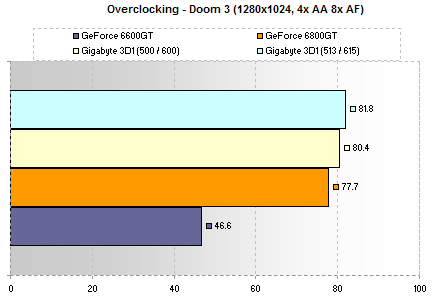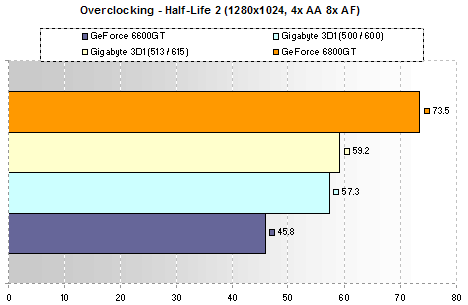Overclocking
When you are already running two cores on a single board, it is perhaps reasonable to not expect too much in the overclocking department. But, of course, that won't stop us from trying, so we spent some time looking for a stable overclock from our Gigabyte 3D1 sample - And remember, it is just a single sample, and so may not be representative of how all boards of this ilk overclock.
Our final overclocking results were nothing to write home about, but not a bad result either. From the default 500MHz core of the 3D1, we found a stable maximum at 513MHz, an increase (obviously) of 13MHz. Overclocking the 1.6ns RAM on the board yielded a similar result, taking us from a default of 600MHz up to 615MHz. I was actually expecting a little more considering the rating of the memory chips used, but it obviously wasn't to be the case.
Now we have our overclock, let's check out performance at these higher speeds, starting with Doom 3, running at 1280x1024 with 4x AA and 8x AF, to avoid any video memory limitations.

Our overclock gives us an extra frame per second or so, nothing earth shattering but enough to stretch the 3D1's lead over a 6800GT slightly.
Next up, we gave our overclocked card a go at running our Half-Life 2 timedemo, again at 1280x1024 with 4x AA and 8x AF.

The GeForce 6800GT leads the pack convincingly here, but our overclock claws back just shy of a couple of frames per second, bringing it that little closer to the magic 60 FPS mark at this resolution.









